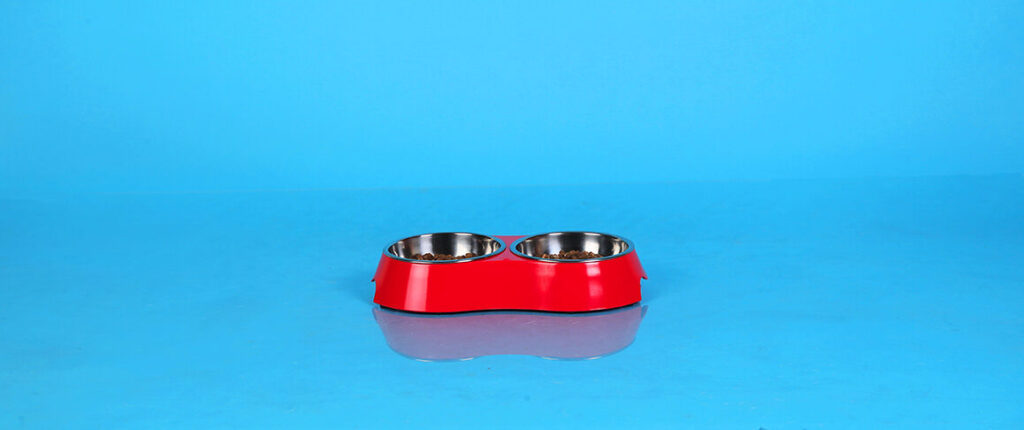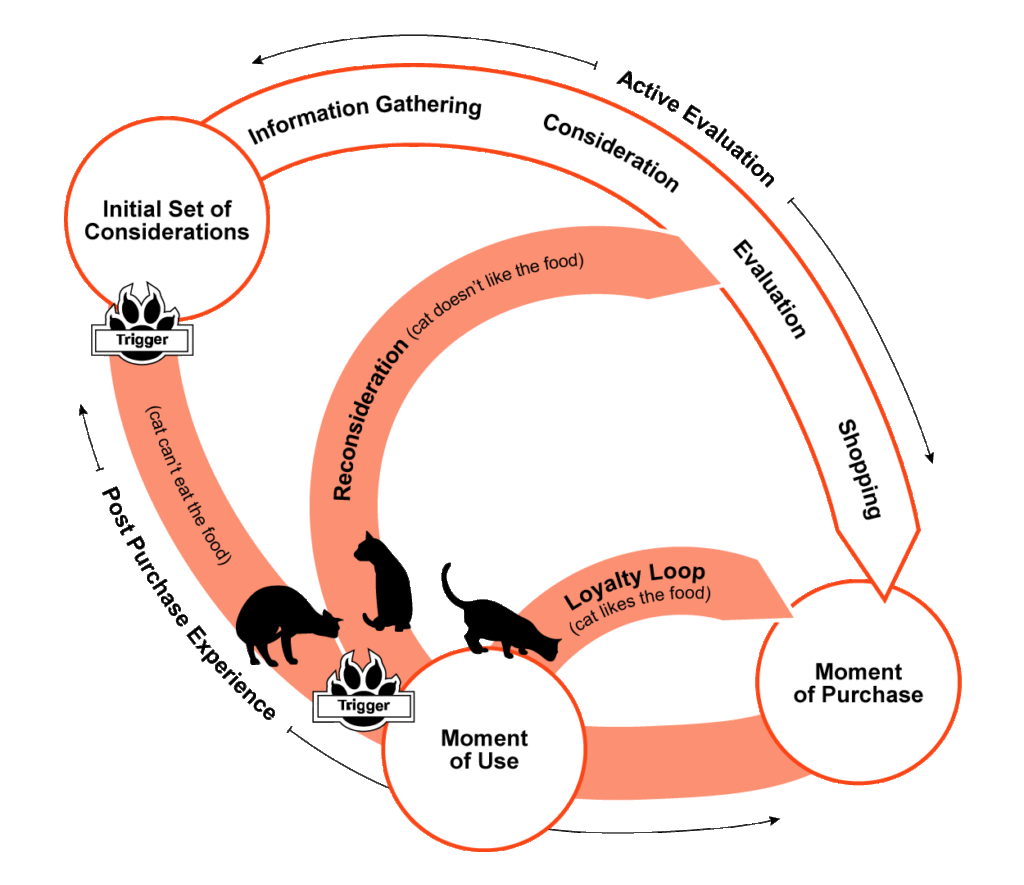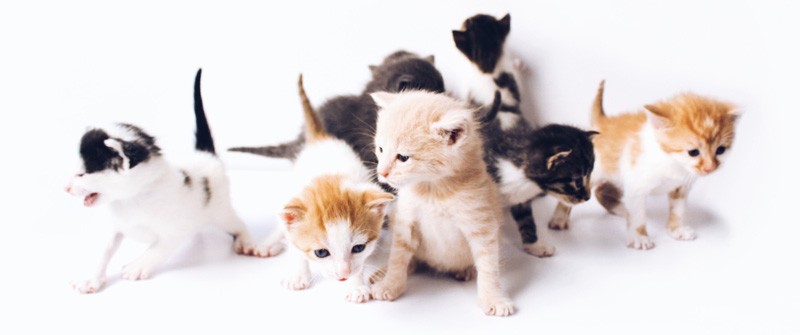Today more people are entering the decision-making journey for cat food than at any time before.
The impact that COVID-19 has had on the lives of people with cats and the cat food industry has been nothing short of astounding.
In a single year we’ve seen a record-breaking rise in first-time cat owners around the world, the unprecedented acceleration of online purchasing behaviour, an almost overnight change in feeding habits and food choices (most notably the seismic shift from dry to wet food), the near collapse of some major pet food brands supply chains, and the exponential growth of a new generation of Direct to Consumer (D2C) pet food brands.
It’s hard to imagine anyone foresaw a time when manufacturing, distribution and global logistics would have to cope with the realities of social distancing, disease control, reduced access to raw materials, and the nightmare of reduced transport and closed borders.
Who could have anticipated the rapid shift in cat owner attitudes and behaviours towards their cat and its food as a result of the virus. Or, how quickly those habits and routines that had been cemented over years would unravel as the rhythm of life for both the cat and the owner changed almost overnight.
For many cat owners, the novel position of being home with their cats 24/7 was something they embraced with joy and exuberance. It afforded them extra time to interact and engage and as a result found themselves increasingly incentivised to explore different ways of making their interactions more rewarding.
For some, the increased time at home resulted in a more intense focus on their health and wellbeing that prompted an increased interest in their cat’s health and wellbeing and most notably, their diet.
Everything from the type of food, its format and its flavour came into consideration. As different types of food and feeding habits were explored, many experienced (for the first time, possibly) an openness to trialing a new food and took the opportunity to go for it.

Others found themselves on the wrong end of a supply chain nightmare. They empty shelves, or ‘out of stock’ messages that blinked back at them from their screens, spurring the realisation that the golden rule of never switching your cat’s food was about to be broken.
And as the economic impact of COVID-19 began to be felt and budget constraints kicked in, some owners were forced to reconsider their choice of food from a more “budget-friendly” point of view.
Whatever the COVID-19 trigger, whether it be the arrival of a new cat, or the desire to improve a cat’s nutrition, or even the harsh reality of an out-of-stock food or reduced budget*, an extraordinarily high number of cat owners are currently entering the decision making journey.
This creates an ideal opportunity for brands to disrupt habitual choices and become the new favorite in the bowl. And now, more than ever, cat food brands need to deeply understand cat owners’ decision-making journeys to know how to inspire, inform and influence choice across the entire journey and in each and every moment that matters.
*For the purpose of this article the term Cat Owner has been used to refer to all across the engagement spectrum; from low to high attachment to their pets (Cat Owners to Cat Parents).
Success Vs Failure

Decision-Making Journey for Cat Food
Unlike many food decision journeys, the cat food decision-making journey is a complex one and one that is filled with emotion.
Being responsible for a cat’s diet means being ultimately responsible for their health and wellbeing, responsible for meeting their most basic need for survival, and this fact weighs heavily on the shoulders of most cat guardians.
A cat’s ability and willingness to refuse food for long periods of time, effectively starving themselves if they don’t like a particular food, means the stakes are high. For guardians, this means the decision-making journey itself is filled with emotion, ever cognizant of the potential risk of getting it wrong.
And even with the best of intentions and a significant amount of legwork, failure is always an option.
In addition, food is intrinsically linked with the quality of the relationship they have with their pet. Feeding routines and rituals are often embedded with meaning and provide special moments of interaction, engagement, and reward. In many cases, the reward for the human outweighs the reward for the cat.
The internal narrative of “I’m a good owner/parent” can turn quickly to “I’ve failed, I’m doing something wrong” on seeing a bowl half-eaten or worse, left untouched.
Feelings of satisfaction and contentment can rapidly switch to anxiety and disappointment, diminishing confidence and creating doubt. With these heightened emotions comes an enhanced set of expectations for any cat food to deliver against.
Aversion To Trial

With early influences (veterinarians, friends, and family) continuously reinforcing the view that one should only change a cat’s diet if necessity dictates, many people only engage with the category sporadically outside of making their habitual purchase, and rarely in any depth.
The threat of digestive upsets, fussy eaters, or even food aversions is usually enough to make most owners be averse to trialing new foods unless a situation occurs which forces them to.
For those who have continued with food their cat has always eaten or one they know their cat enjoys and is good for them, the cat food category can be something they give little thought to and is for the most part unknown territory.
There are those who do actively engage in the category and are open to trialing different foods, but the majority prefer to stick with what works.
This is why when cat owners do eventually have to enter and engage with the category beyond their habitual purchase, it can be an experience like no other.
And not in a good way.
Emotional Roller Coaster

Every single trigger that can push someone back into the decision-making journey is laden with emotion. Sometimes positive, but more often than not, negative. Whether mild or overwhelming, these emotions create a unique dynamic within the decision-making journey.
The emotional state of the cat owner at the point of trigger informs their approach and how they experience the decision-making journey. It influences every step and every aspect of it.
How much time and energy they invest in it, where they go, who they listen to, the actions they take and their expectations of success. Above all, it influences their motivations (needs, wants, and wishes), and how they change over the course of the journey.
Existing beliefs and attitudes about what constitutes appropriate cat nutrition and good quality food give them a foundation to work from, but with every new voice they hear, those beliefs and attitudes can be as much called into question as they can be confirmed.
An information search related to cat nutrition and feeding can have an owner disappearing down an information and influence rabbit hole that makes Alice’s Wonderland feel normal. When it comes to pet food, everyone has an opinion and knowing who to listen to and trust with your cat’s health is no mean feat.
Crowded Category

As owners explore the category, the chaos and confusion comes to the fore. Trying to determine which criteria matter most to them from an almost eye-watering array of possibilities (some they’ve never even heard of), coupled with an ever-expanding range of products, can induce even the most rational owner into a state of choice paralysis.
Trying to make sense of the complicated and comprehensive criteria they need to base their decision on can test cognitive capacity to the nth degree. And brands aren’t helping. Rather than making it easier for people to understand and navigate the category, most are making it worse.
Owners are left to fend for themselves, trying to find sources of information and advice that can help make the journey a little less painful, and have some chance of success.
Ultimately, with a cat’s inability to communicate any preference except by their behaviour at the bowl, owners have to at best interpret their cats actions towards food, make assumptions about what the cat finds palatable and then engage in some calculated guesswork and eventually take a leap of faith.
Moment of Truth

Unfortunately, despite all the time, energy, and in some cases money invested in the search for the right food choice, the real ‘moment of truth’ is when the cat is faced with the bowl of food.
They alone are the ones who decide. They vote with their mouths to give the metaphorical thumbs up or thumbs down, determining if the choice has been a good one, or if the cycle needs to be repeated again. And possibly again.
_______
Cat owners are at best a curator of options or a proposer of solutions, but are not, and will never be, the final decision-maker.
_______
Ultimately the choice is firmly in the hands (or paws) of their cat.
This knowledge, that the result can be due as much to luck as judgment, whether gained early on or learned the hard way after a number of years, makes the decision-making journey to find a new food one most would rather avoid.
Brand Opportunity
It also makes it a decision journey ripe with opportunities for cat food brands to not just inspire, inform and influence cat owners in the moments that matter, but support and empower them to make easy choices that put their cats health and wellbeing front and center.
Whether it’s exploring belief formation, mapping ecosystems of influence, understanding choice architecture or gaining insight into every stage of the multi-faceted, multi-channel journey curiosity isn’t just for cats.
Contact Liz to receive your copy of the full Cat Food & Decision Making Journey Whitepaper – it sets out our approach and perspective on the cat food decision-making journey, focuses on some of the psychological and behavioral aspects unique to the category, and highlights areas we believe are critical for cat food brands to understand if they are to compete and win with cat owners (and their cats).


